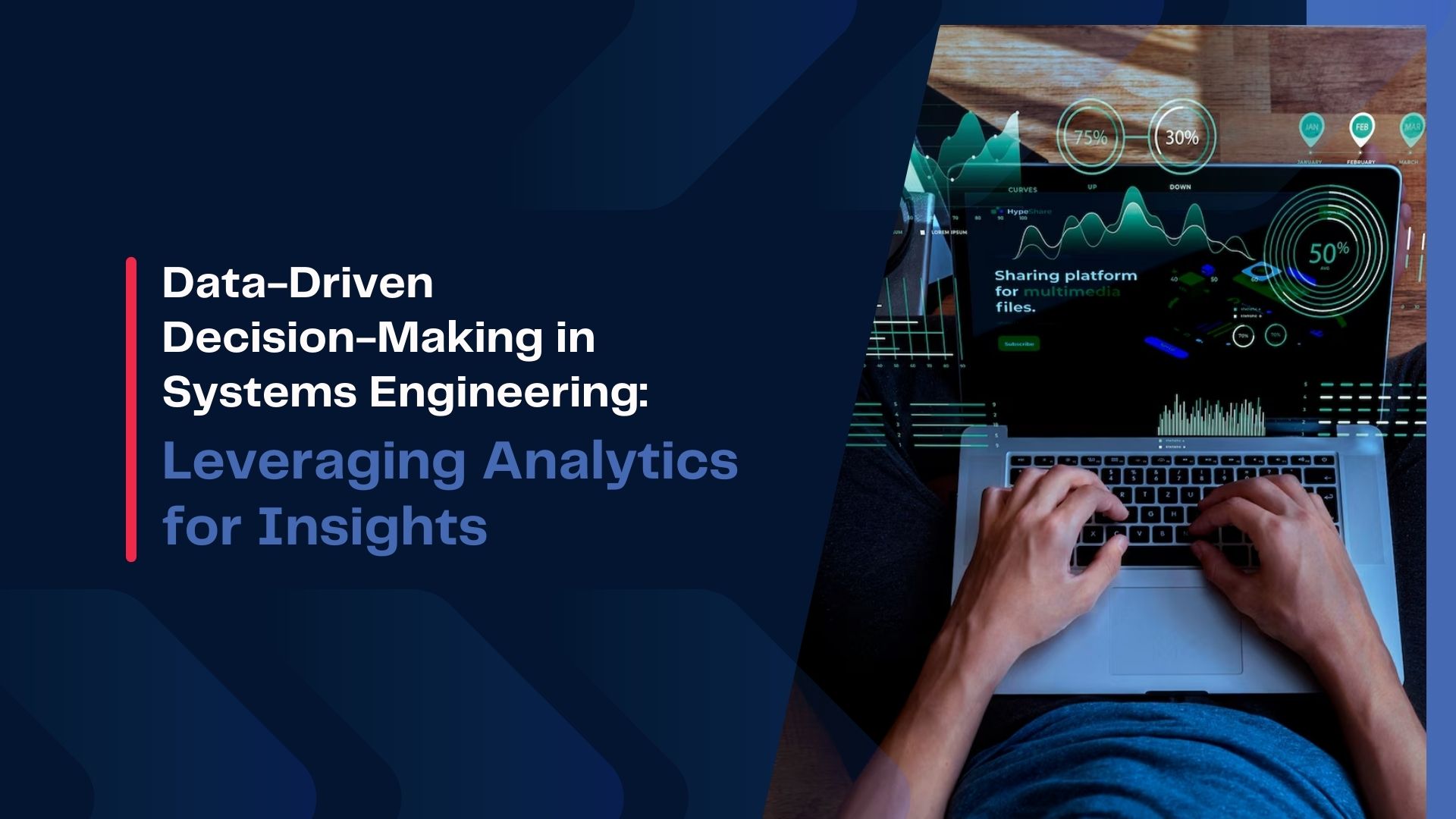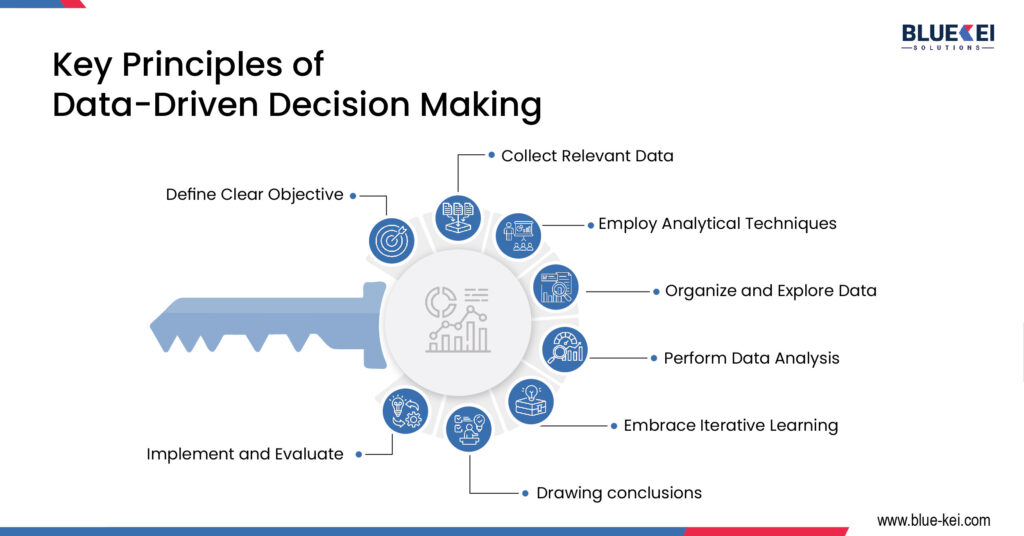Data-Driven Decision-Making in Systems Engineering: Leveraging Analytics for Insights


- ● Define Clear Objectives: By defining the problem and desired outcomes, a roadmap is established, guiding efforts toward insights aligned with overarching goals. This clarity streamlines decision-making and ensures resources are directed toward meaningful results that contribute to organizational objectives.
- ● Collect Relevant Data: Insights from data analysis rely heavily on the quality of the collected data. To ensure accuracy, gathering relevant data from diverse sources is crucial. This comprehensive approach captures the system’s full behavior, allowing analysts to uncover valuable trends. Meticulous data collection guarantees robust and reliable insights, forming a solid basis for informed decision-making.
- ● Employ Appropriate Analytical Techniques: Different analytical techniques may be required depending on the nature of the problem at hand. Whether it’s descriptive analytics to understand past trends, predictive analytics to forecast future outcomes, or prescriptive analytics to recommend optimal actions, choosing the right approach is crucial.
- ● Organize and Explore Data: Effective decision-making relies on accessing and understanding relevant data. Begin by organizing enterprise data for easy visualization and exploration. Structuring data creates a foundation for seamless exploration, enabling deeper insights tailored to your context. This organized approach facilitates comprehensive analysis and informed decision-making.
- ● Perform Data Analysis: Once data is organized, the next step is analysis using reporting tools and analytical methods. This is crucial for uncovering patterns, trends, and correlations, transforming raw data into actionable insights. These insights empower decision-makers to make informed choices aligned with organizational goals, maximizing efficiency and effectiveness.
- ● Embrace Iterative Learning: This is an iterative process involving continuously fine-tuning models, algorithms, and decision-making criteria based on feedback gleaned from ongoing analysis and real-world observations. By embracing a cycle of learning and improvement, organizations can adapt to changing dynamics, optimize outcomes, and stay ahead in today’s fast-paced and complex landscape.
- ● Drawing conclusions: Crafting a compelling narrative that resonates with your team is crucial for deriving meaningful insights from data analysis. Summarizing pivotal findings, highlighting trends, and leveraging visual aids like graphs and charts enhance clarity. Outline actionable next steps and elucidate how these findings align with team objectives. Encourage participation to foster shared understanding, facilitate informed decision-making, and yield positive outcomes.
- ● Implement and Evaluate: Monitoring progress, tracking KPIs, and gathering feedback are crucial for ongoing evaluation. Cultivating a culture of continuous improvement fosters innovation and agility. Leveraging insights from data analysis, organizations can drive meaningful change and achieve success through iterative implementation.
According to a study by McKinsey, companies that make extensive use of data-driven decision-making are 5% more productive and 6% more profitable than their competitors. The applications of DDDM are diverse and far-reaching. From corporate giants and education to healthcare, DDDM is revolutionizing how business decisions are made and here are a couple of examples.
- ● Netflix
- ● Airbnb
If you would like to establish SE and MBSE practices for DDDM, contact our seasoned systems engineers to help you out.
If you are interested in understanding how to adopt systems engineering and model based systems engineering practices within your organization, reach out to BlueKei Solutions team at info@Blue-Kei.com. We specialize in systems engineering consulting, project executions, process adoptions such as compliance to ISO15288, ARP 4754A, ISO 42020, digital transformations. We can also conduct capability development workshops which are experiential and tailored to your needs. With systems engineering adoption you can address the complexity, manage evolving risks and bring transformation in communication within your organization through digitalization and create the digital thread.

